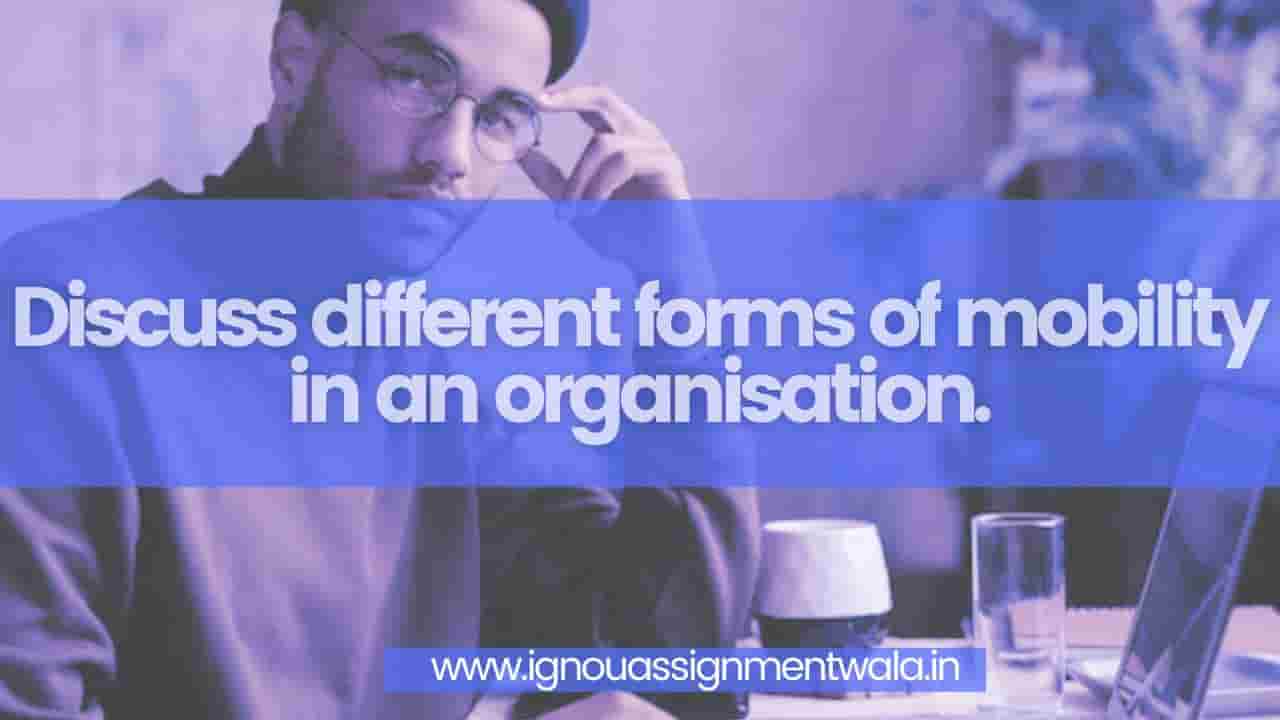In the context of organizations, mobility refers to the movement of individuals, information, or resources within the organizational structure. Various forms of mobility contribute to an organization’s efficiency, adaptability, and overall performance. Let’s explore some common forms of mobility in an organization:
1. Employee Mobility: This type of mobility refers to the movement of employees within the organization. It includes both horizontal and vertical mobility. Horizontal mobility involves employees moving to different positions at the same hierarchical level, such as transferring from one department to another. Vertical mobility involves promotion or demotion within the organization’s hierarchy.
2. Job Rotation: Job rotation involves moving employees through different roles and functions within the organization. It helps employees gain diverse skill sets, enhances their understanding of various aspects of the business, and can lead to increased employee satisfaction and reduced monotony.
3. Geographical Mobility: This form of mobility involves employees moving to different geographic locations due to job requirements or transfers. It can be either international or domestic, depending on the organization’s global presence.
4. Knowledge Mobility: Knowledge mobility refers to the transfer of knowledge and expertise across various parts of the organization. This can occur through training programs, workshops, seminars, or internal knowledge-sharing platforms.
5. Cross-Functional Mobility: In cross-functional mobility, employees from one department or division work temporarily or permanently in another department. This fosters collaboration, improves communication, and promotes a holistic understanding of the organization’s operations.
6. Digital Mobility: With the increasing use of digital tools and technologies, digital mobility allows employees to work remotely or access critical information while on the move. This can include remote work arrangements, virtual meetings, and mobile applications.
Read more : eGyanKosh: Semester-I
Read more : HOW TO DOWNLOAD IGNOU STUDY MATERIAL ? – IGNOU Assignment Wala
7. Resource Mobility: Resource mobility involves reallocating physical assets and resources within the organization. For example, moving equipment, machinery, or funds from one project or department to another to optimize resource utilization.
8. Information Mobility: Information mobility refers to the flow of information within the organization. This includes sharing data, reports, and insights across different teams and levels to facilitate better decision-making.
9. Vendor or Supplier Mobility: Organizations may also establish relationships with multiple vendors or suppliers to maintain flexibility and ensure a steady supply of goods or services.
10. Leadership Mobility: Leadership mobility focuses on grooming and promoting leaders from within the organization. This approach allows the organization to retain institutional knowledge and create a sense of continuity.
11. Innovation Mobility: Encouraging employees to move across different innovation projects or teams allows for the cross-pollination of ideas, leading to increased creativity and better problem-solving.
12. Temporary Mobility: Some organizations offer short-term assignments or projects to employees in different locations or teams. This type of mobility can provide valuable learning experiences and foster a global mindset among the workforce.
Each form of mobility brings its unique benefits to an organization. A well-balanced mobility strategy can lead to a more agile and adaptable workforce, better employee engagement, improved skill development, and increased overall organizational efficiency. However, it’s crucial for organizations to carefully plan and manage mobility initiatives to ensure they align with the organization’s goals and the needs of its employees.





